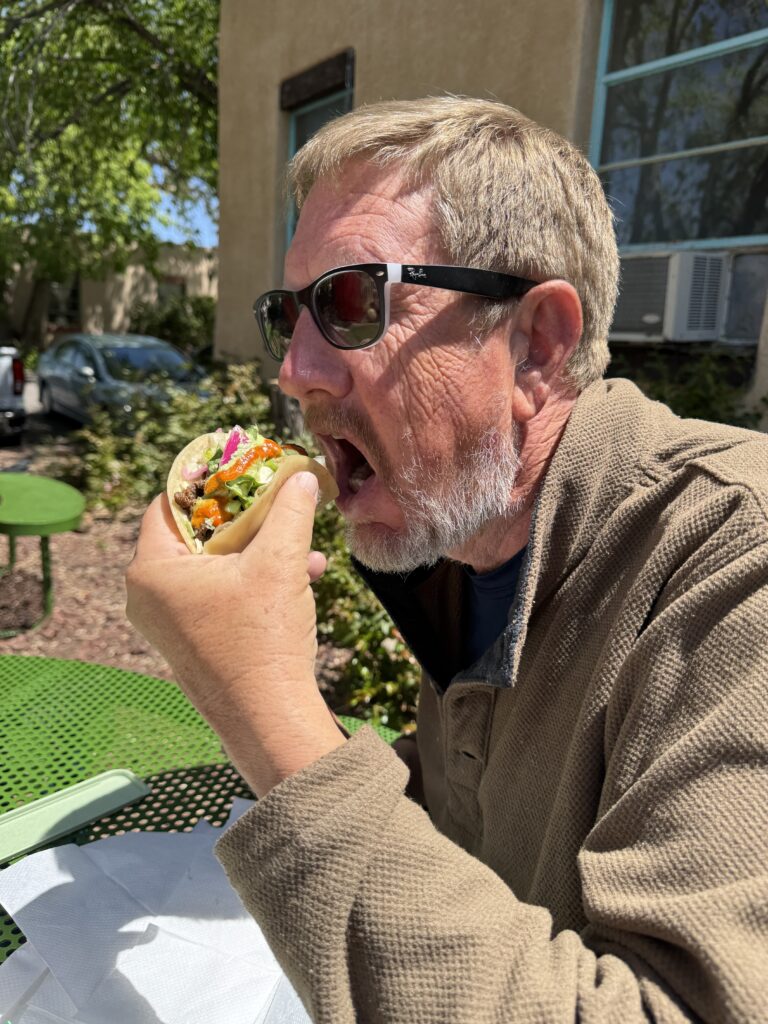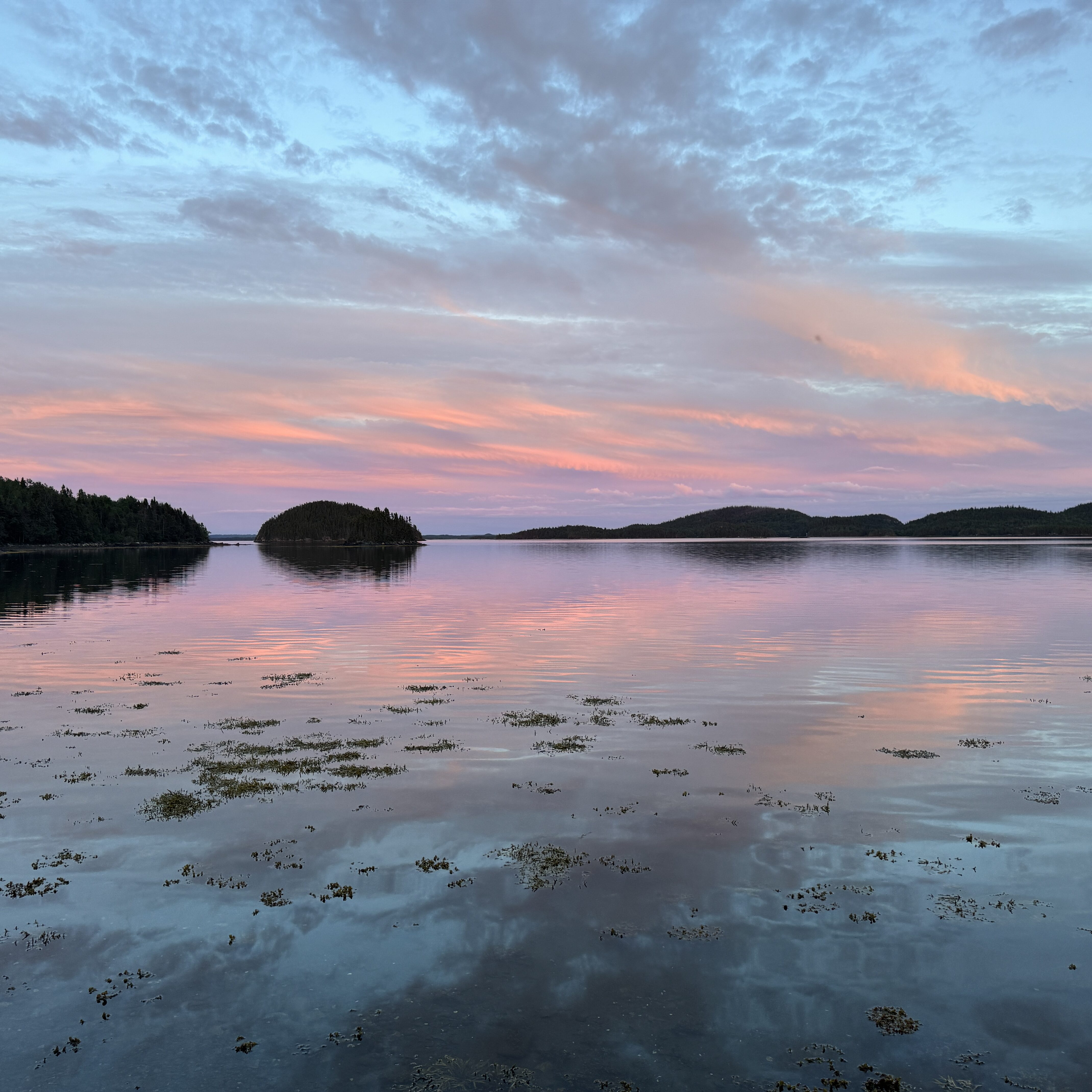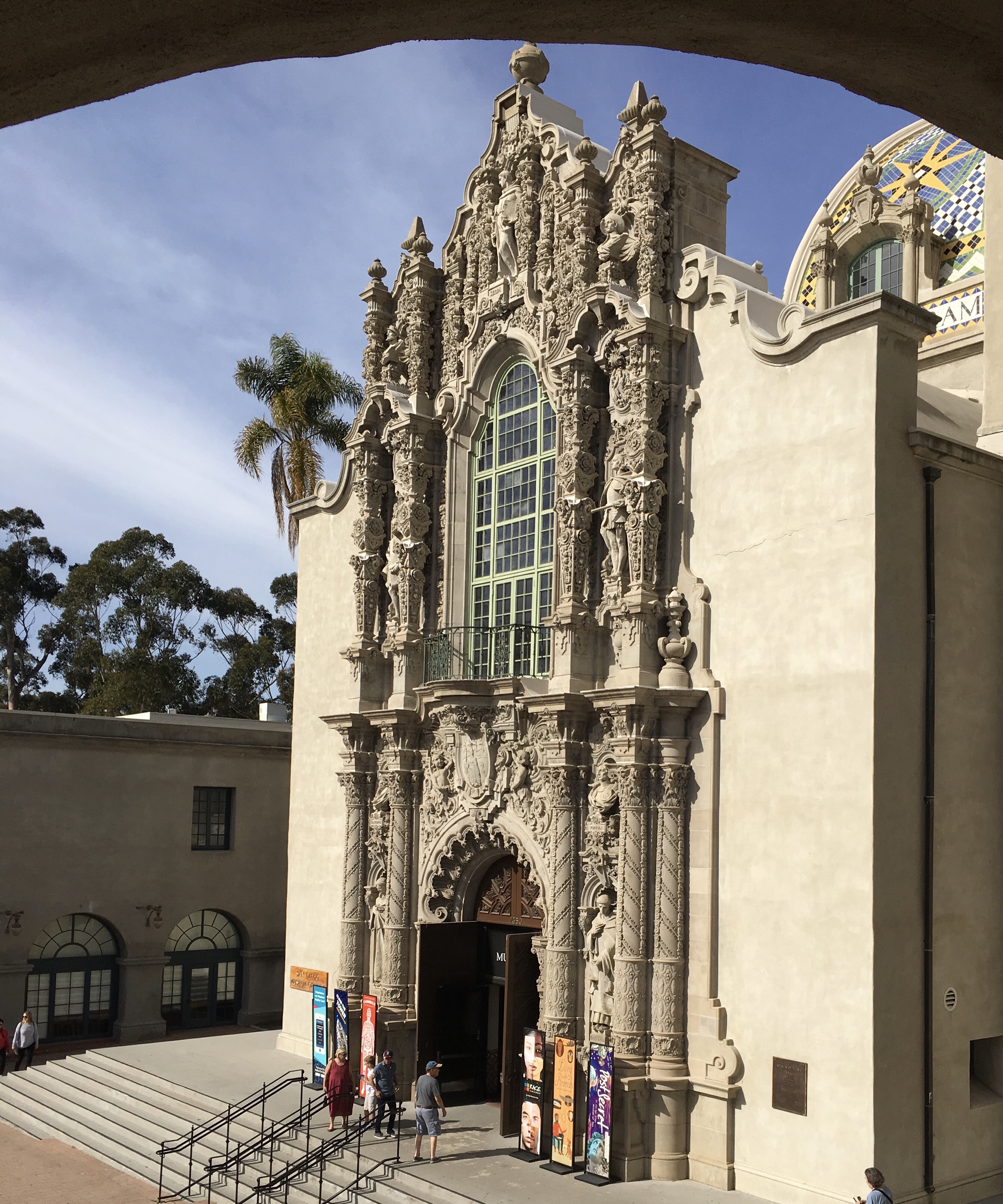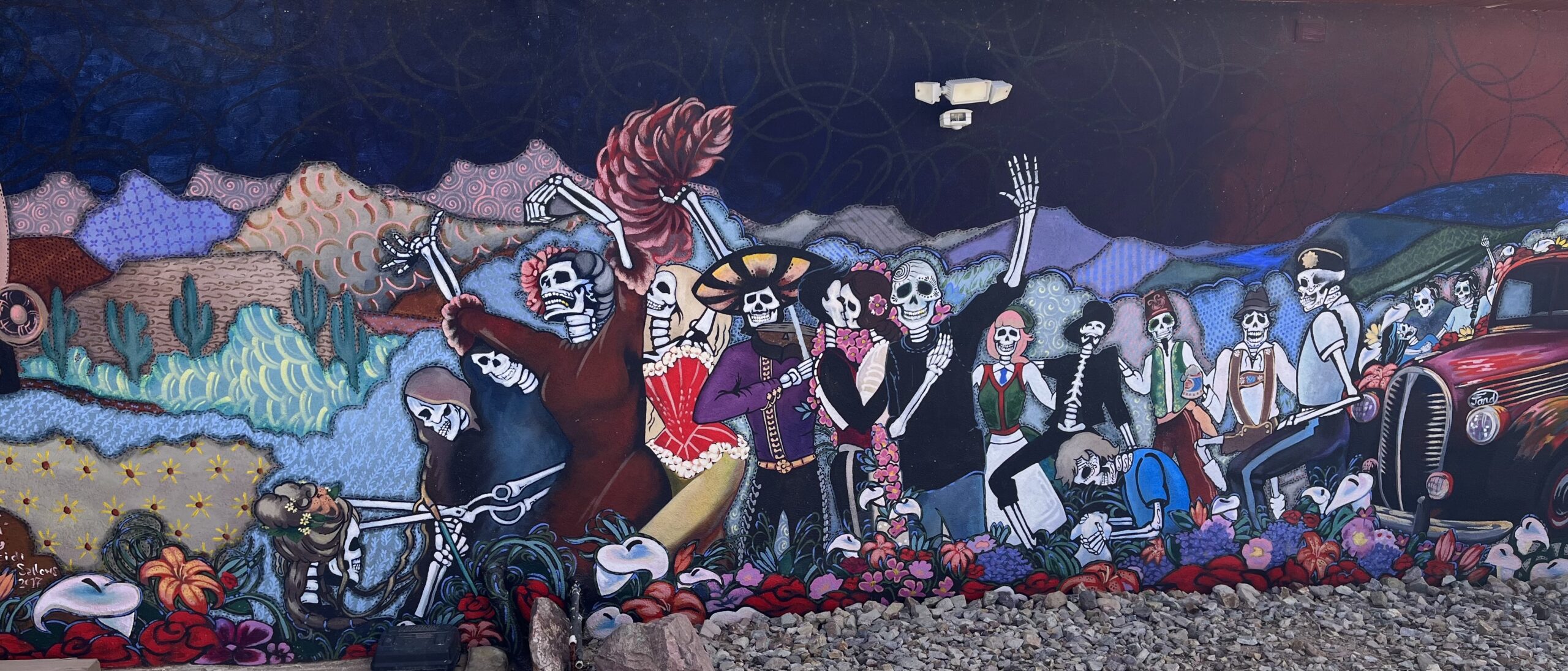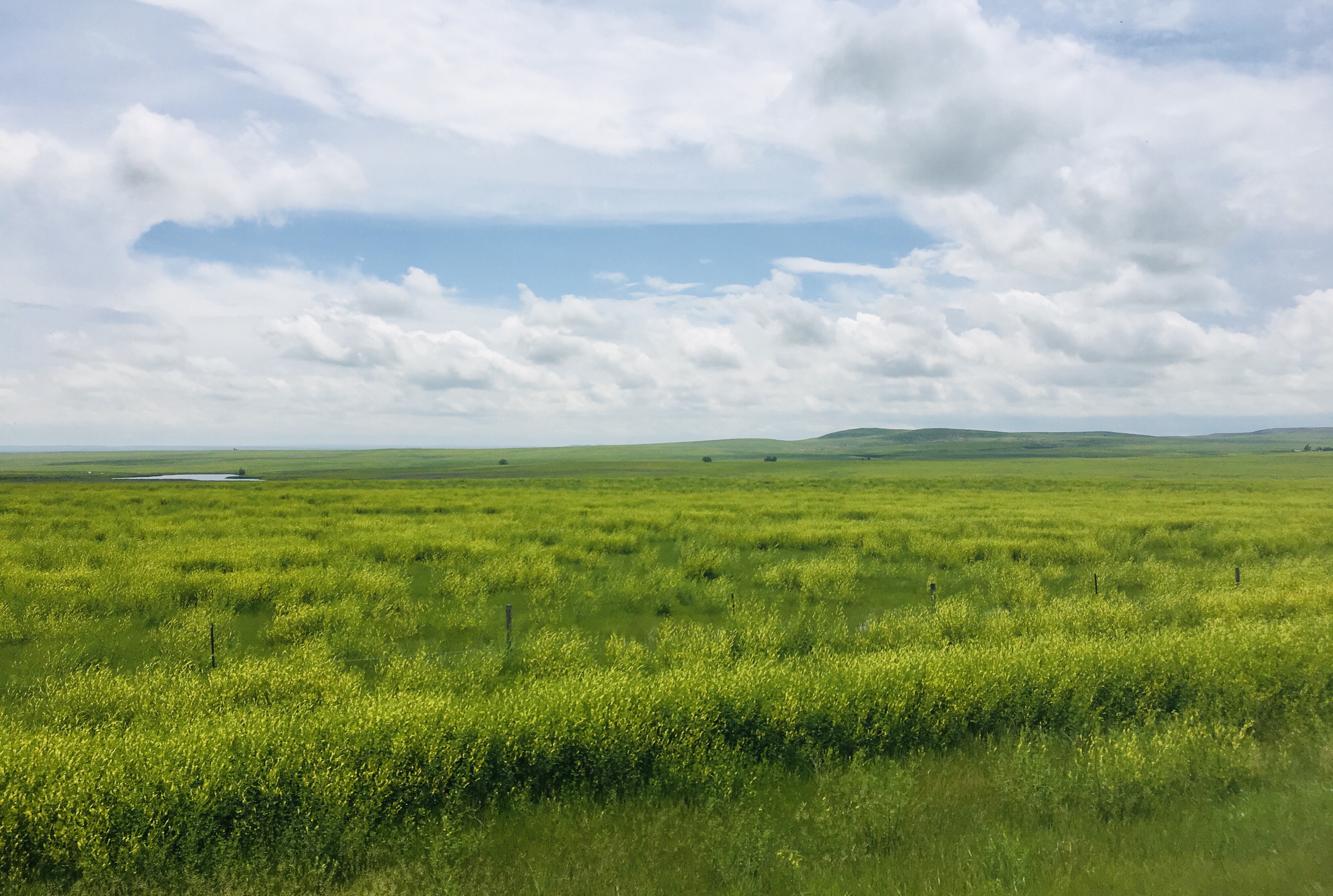Looking out over the canyon we deliberated with Rand McNally, looking for routes that might provide a combination of visual euphoria, temperate weather and ways to satiate our thirst of high desert culture before returning to our snug, sea level suburban scene.
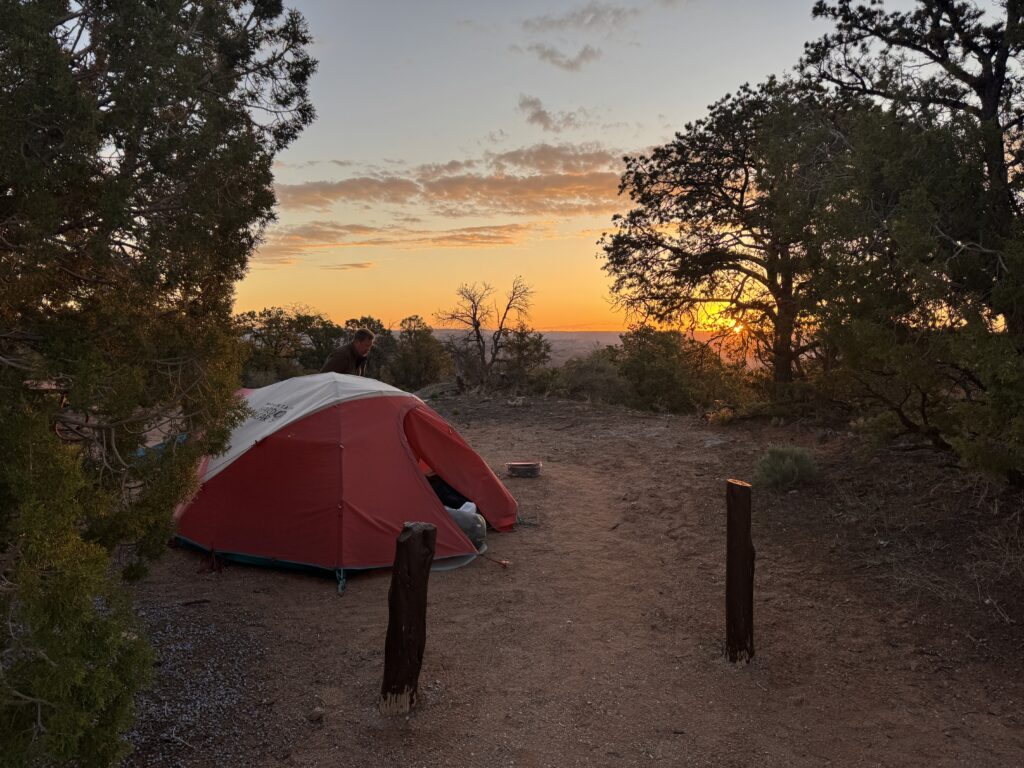
The Bisti Badlands lie 40 miles south of Farmington, New Mexico. They’re not on the Rand McNally map. We read about them in a flyer while doing two loads at the Laundrotopia. Our sights were set on a scenic bye-byway to Cuba and into Bandalier National Monument. But we are all in on season 3 of Into the Badlands (streaming Amazon Prime & Hoopla), so it felt like a sign. Time to pivot.
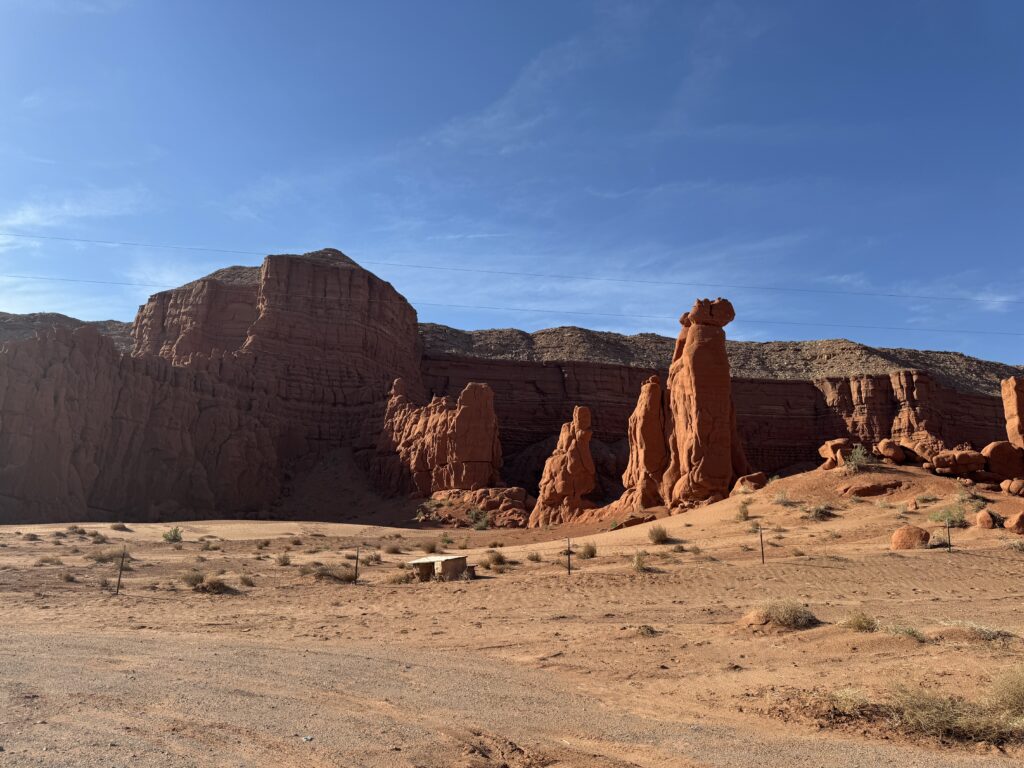
Earlier that morning we rose at dawn for the 450 mile day ahead. The plan was coffee in Kayenta, laundry and lunch in Cuba and making camp at the Bandalier National Monument outside Santa Fe. Lured by a billboard for the Navajo Code Talkers museum inside the Burger King, we got coffee and breakfast and a fascinating history of how a small cadre of Navajo Indians joined the USMC in WW2 and used their native language to pass unbreakable code during the battle of Iwo Jima. The Smithsonian-level collection of artifacts is housed in a Burger King on the edge of the Navajo Nation. There is simply no explaining some things in life and this is probably one of them. Breakfast was incredibly moving and also surprisingly delicious.
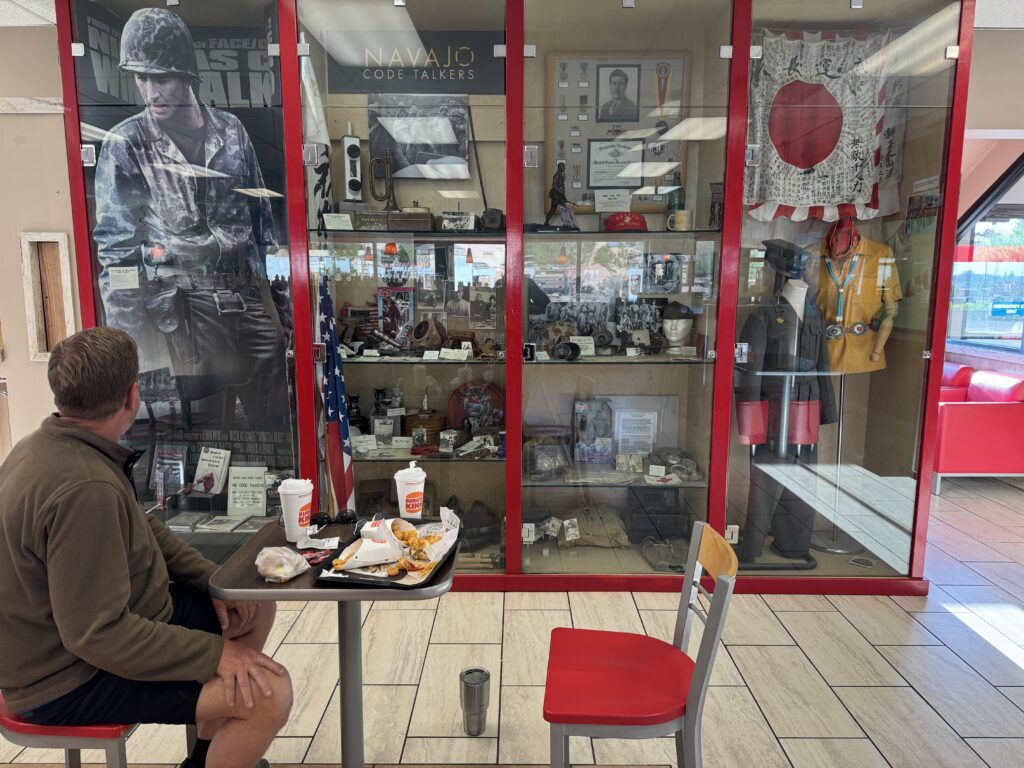
Eric used the hour in Laudrotopia to scour Google maps to find our way into the Bisti Badlands. A significant detour, the route to Bandelier was out the window. The “Badlands” in one form or another appear in pockets all the way from Washington State (they call them the scablands) to New Mexico. The Bisti Badlands are rarely visited probably because they adjoin Navajo Nation lands which have little in the way of tourist infrastructure. We found them 60 miles out of our way off of any interstate with the last few miles on dirt roads.
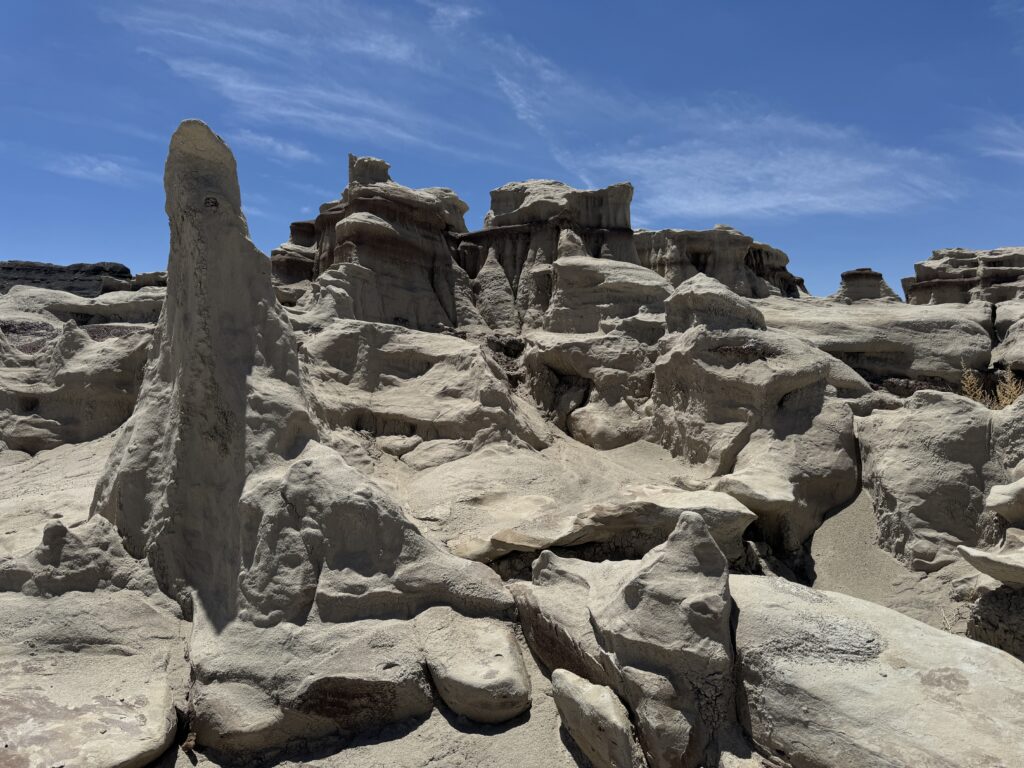
There are no trails. You just walk out into the Badlands and explore until your heart is content or your legs are discontent. The various wild structures left by ancient oceans, wind, and rain have catchy names, or you can just name them yourself. The geology gives the impression of walking on the bottom of a sea set from the Little Mermaid except with all of the water drained out. When our liter of water was finished, so were we.
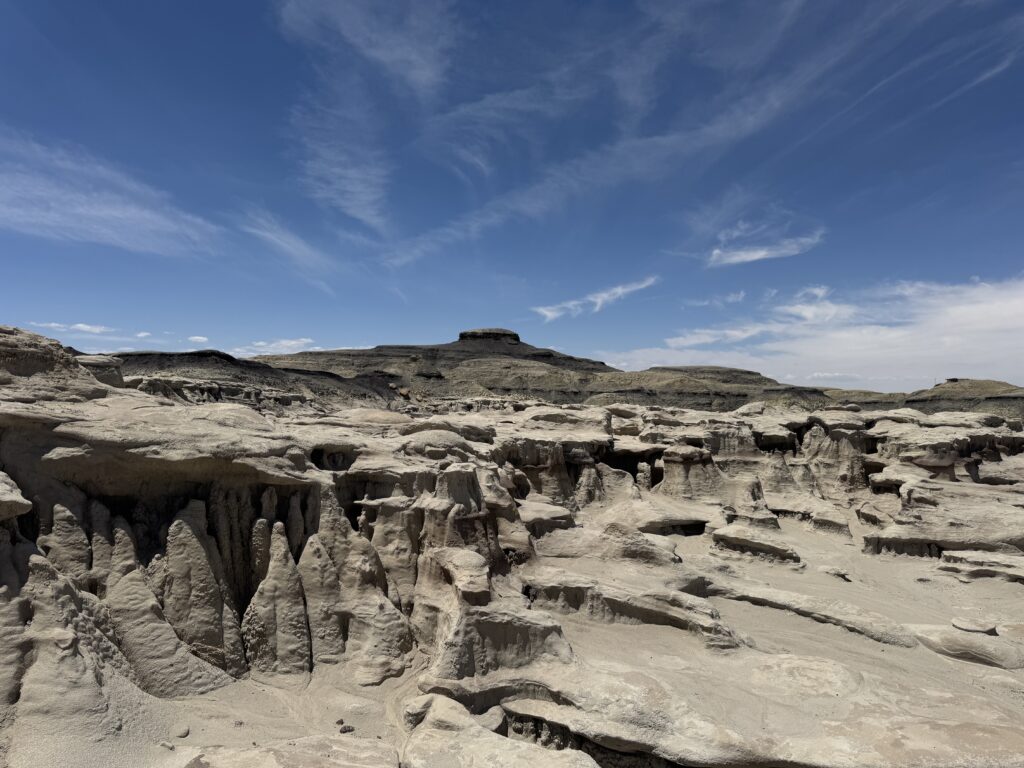
Beyond the detour we took the “locals only” long lonely backroads into Santa Fe. New Mexico has long been one of our favorite travel destinations. We’ve run every city north to south on I-25 from Taos to Las Cruces with some off highway excursions to national parks and monuments like Carlsbad Caverns, White Sands and El Malpais. Saturday morning a New York Times piece on 36 hours in Santa Fe pulled us in just like they did with their feature on Marfa, TX eight years ago.
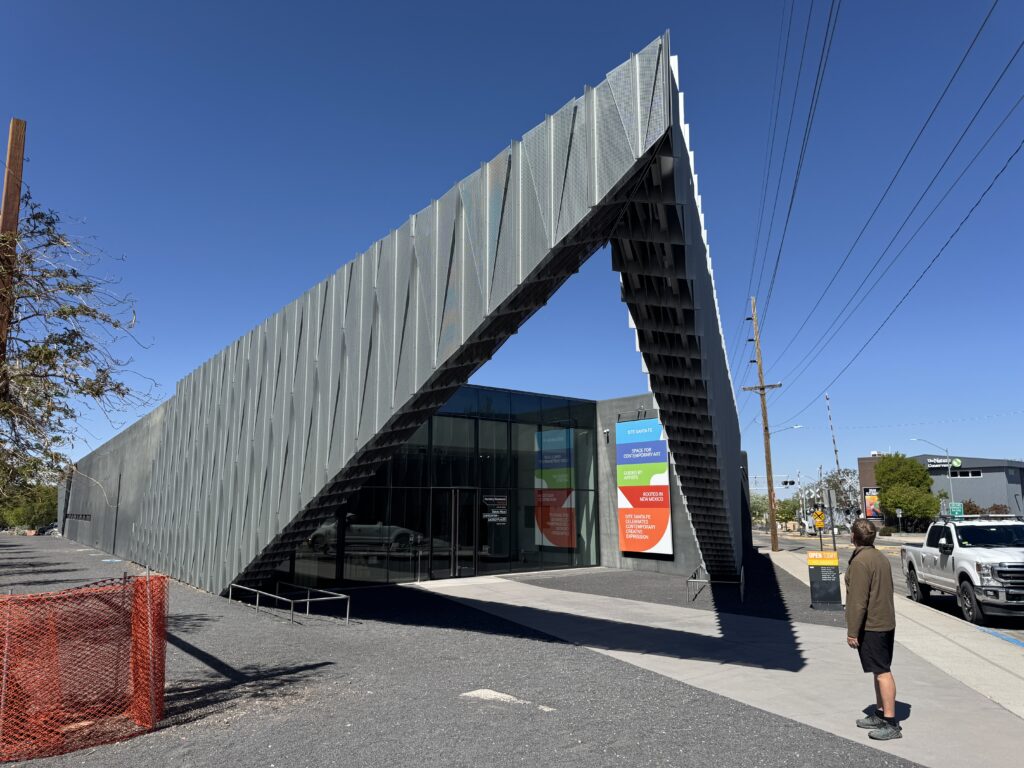
After a week of pure boon docking in The Playa and Navajo National Monument, we had to call an audible on their recommendation to camp at Bandelier National Monument. It was hard to pass up a National Monument but we just could not empty and refill the bed of Boss one more time. We traded up for a real bed in a Best Western and took our first real shower in 6 days.
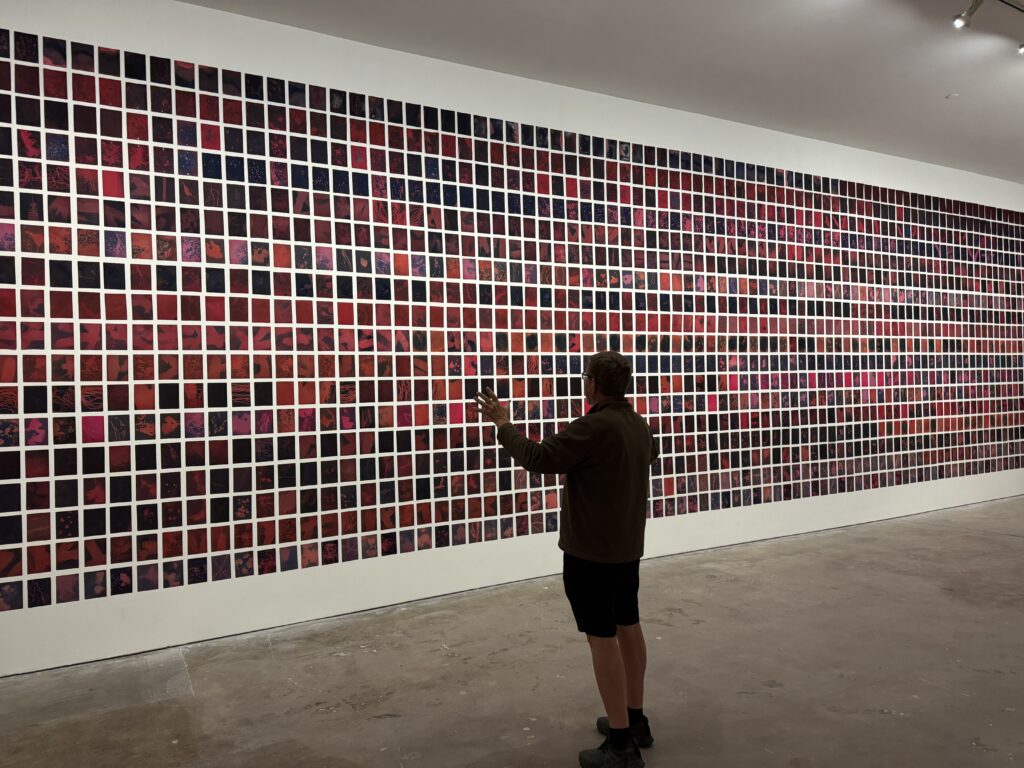
Following the NYT guide, we noshed on Santa Fe’s top rated cornmeal crust pizza one day and grabbed takeout with the construction boys at the James Beard Award winning El Chile Toreado Taco Truck the next day. That’s the best thing about these NYT articles, you eat really well. Down at the Rail Yard, we checked out the new age park and got our art on at Site Santa Fe. The NYT calls it 36 hours in Santa Fe, but we can do it in 12. Obviously, we are professionals and you should not try this at home.
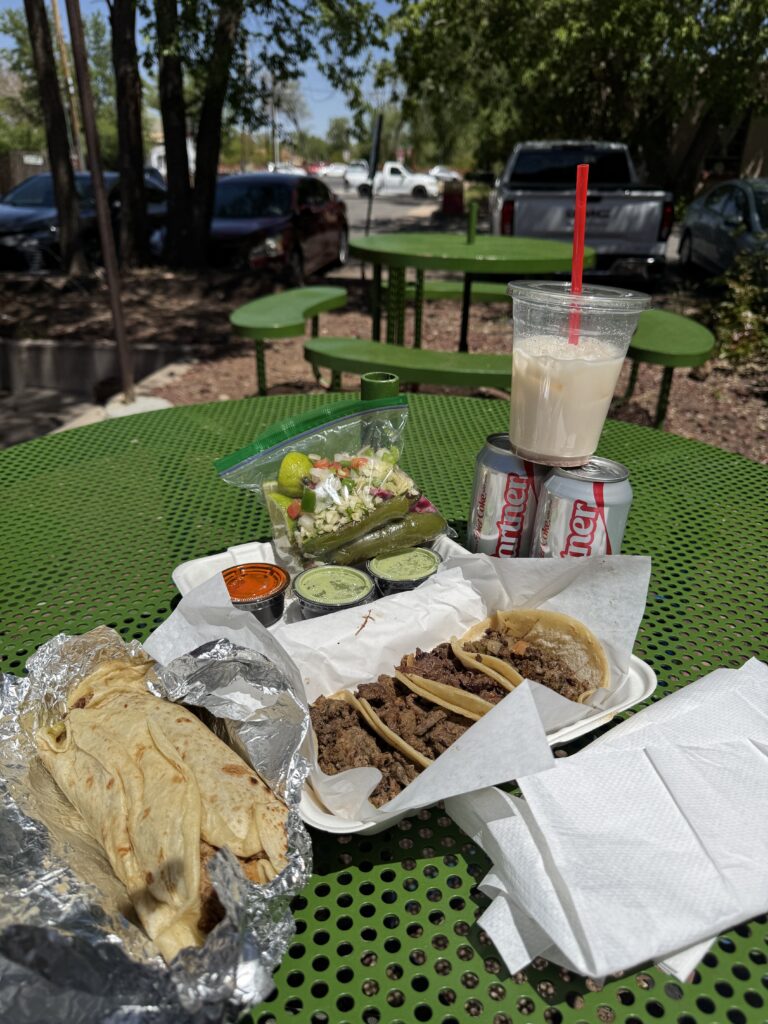
Santa Fe brings us dangerously close to leaving the West. The West is huge. In fact is nearly as far from the Black Rock Desert to Santa Fe as it is from Santa Fe to Florida. We are ingesting the vibe and feasting our way through the Land of Enchantment. If we had to pick a Western home, New Mexico would be it.
